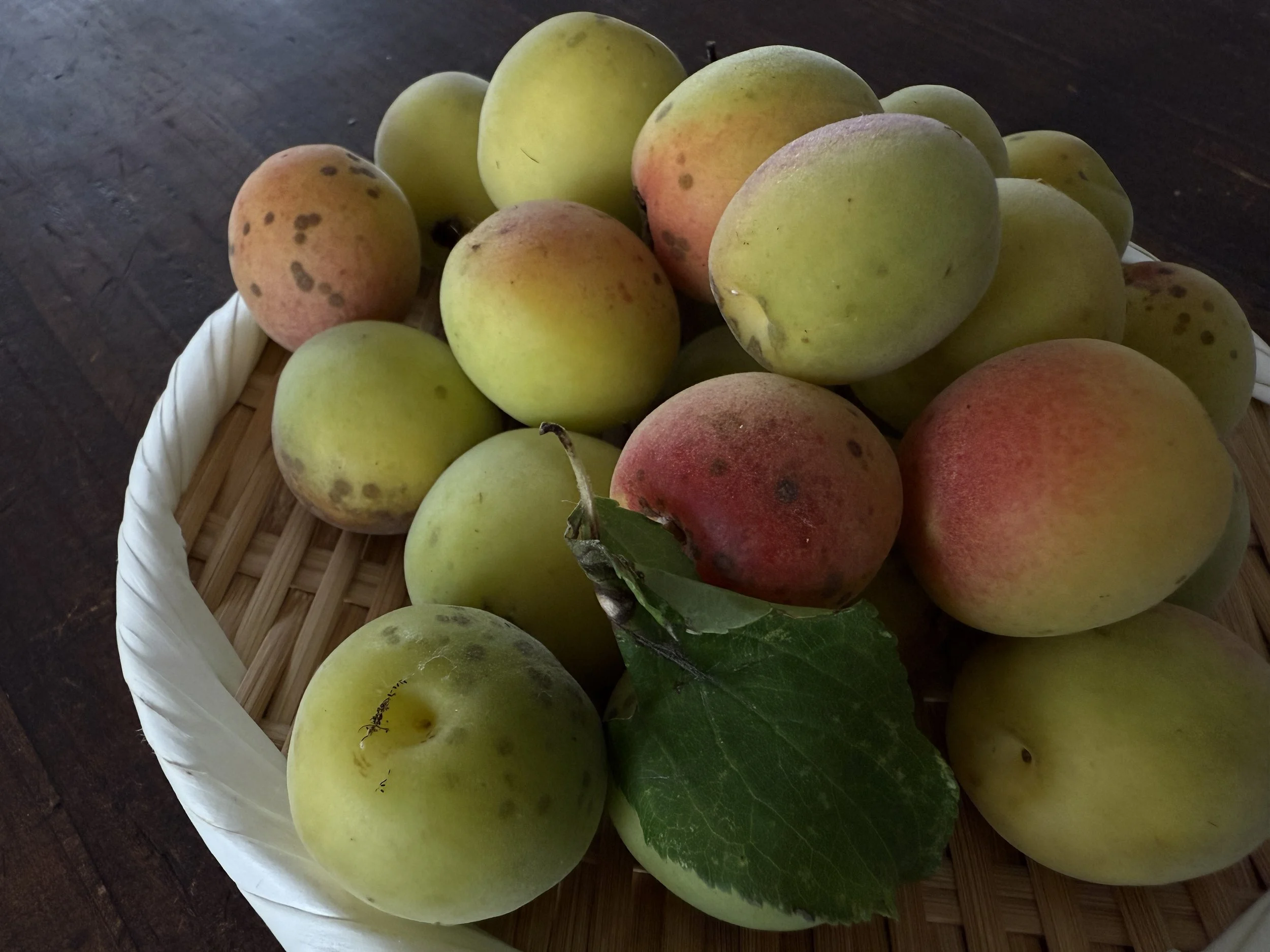Microseason: Plums Ripen Yellow
SUMMER
PLANTING SEEDS
PLUMS RIPEN YELLOW
16 - 20 June
As rice paddies fill with water and fireflies show-off their light, a subtle change unfolds in nearby gardens, orchards, and mountain groves. The green fruit of the umé tree begins to ripen into a blushed yellow.
Tsuyu, or plum rains, marks rainy season in Japan. This season is synonymous with “plum work”. Kitchens across the country smell of fragrant plums, as we prepare them as liquors, syrups, pickles, and other medicinal purposes for the year ahead. Modern science continue to explore the antimicrobial and antioxidant properties of umé, and it remains one of the few fruit crops in Japan with an active dual role in cuisine and pharmacology.
Intensely sour, with a hint of plum’s sweet fragrance lingering at the end, uméboshi, salt-preserved sun-dried pickled green plums are prized not only for their long shelf life but for their antiseptic properties too. A byproduct of uméboshi production is umésu. It’s the vinegar.
With riper yellow fruit, uméshu is made by packing whole fruit in clear alcohol along with rock sugar, or simply with mirin. This produces a smooth, fragrant beverage with a unique balance of sweetness and acidity. Perfect to fight off the heaviness of deep Summer humidity.
One of the most labor-intensive preparations is bainiku ékisu, or umé extract. Green fruit is slowly reduced over many hours into a dense black paste. This extract, high in citric acid and trace minerals, is consumed in small quantities as a powerful home remedy.
Umé’s status in Japan is far beyond its botanical identity. Among the first trees to flower in the earliest days of Spring, its white or pink blossoms emerge even before the snow has fully melted, are featured in in Nihonga painting, lacquerware, kimono, and pottery.
Photo credit: Momoko Nakamura

